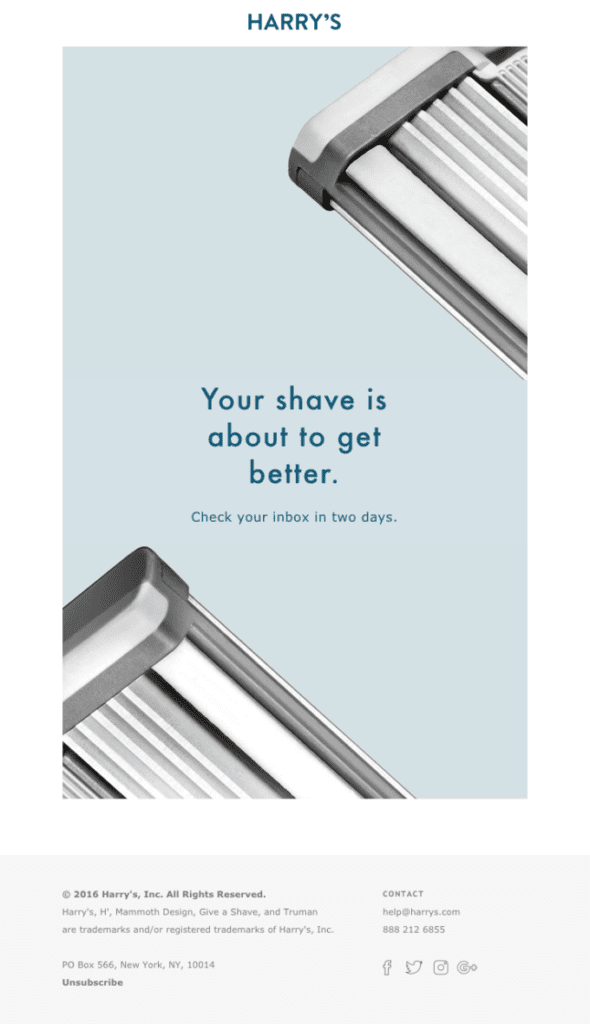Teaser Advertising: Building Hype Before the Big Reveal
Imagine you are presented with two boxes. One is transparent and you get an immediate glance at what’s inside. And the other is wrapped tight concealing its contents. Which one are you likely to go to first? The wrapped one, right? The allure of the unknown, the thrill of potential discovery – that’s precisely what teaser advertising is all about! And it’s not just for Hollywood anymore.
Sure, we’ve all seen movie teasers that leave us desperate for more, but businesses across industries are now using teasers to captivate their audiences. It’s a strategic tool to ignite curiosity and ultimately, drive engagement.
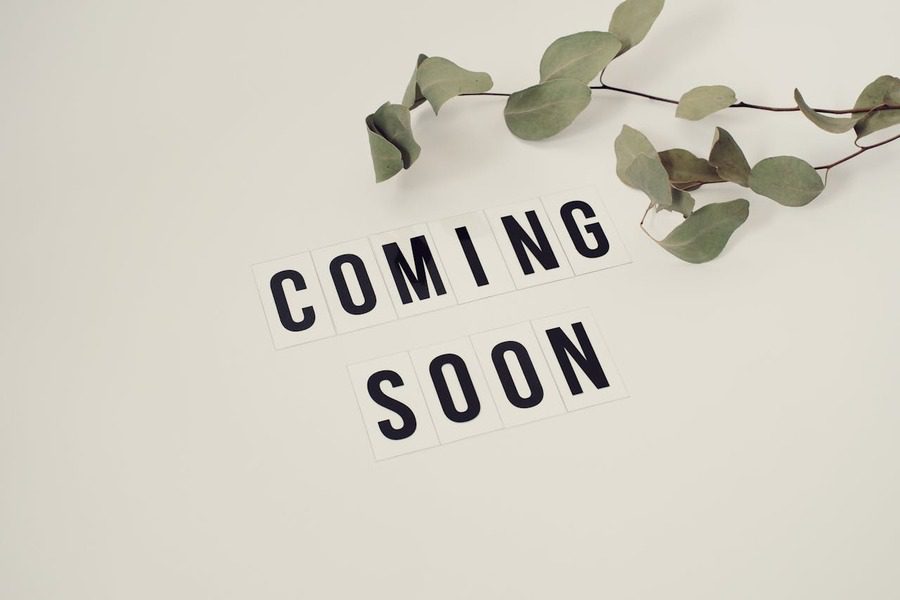
So, are you leveraging this potent marketing tactic for your brand? If not, you’re missing out! This blog will be your guide to unlocking the secrets of teaser advertising – from tips to ideas to help you unleash the power of mystery.
Ready for a quick overview of teaser advertising? Let’s go!
- What is Teaser Advertising?
- Platforms & Formats: Where to Spark Curiosity with Teaser Ads
- 1. Emails – to intrigue and convert
- 2. Social media – to boost engagement and shareability
- 3. Web placements – headers, landing pages, and banner ads
- 4. Video posts/ads – on apps, social media or TV broadcasting
- 5. Outdoor advertising – for effective local marketing
- 6. Print ads – tangible connections
- The Versatile Applications of Teaser Advertising
- Unlock the Power of Teaser Advertising With Designs by KIMP
What is Teaser Advertising?
When you want to promote your product, service or an event and you do so by releasing just a few details, it’s called a teaser. Yes, it’s very much like movie teasers that introduce clues or cast to build anticipation for the movie before release. The idea is simple – instead of presenting all the information all at once, you only reveal enough to pique your audience’s interests.
By doing so, you can:
- Build excitement around the promoted product/service.
- Spark conversations online and offline.
- Make customers feel like an insider by giving them information before the big launch.
To leverage these benefits, teasers can be created as static images for digital and print media or videos for social media. Different formats and platforms work for different applications. So, let’s begin by discussing the various formats and platforms where teasers are effective and then discuss some of their applications and design tips as well.
Platforms & Formats: Where to Spark Curiosity with Teaser Ads
With the options expanding both for digital and offline advertising, it’s a good idea to understand the placement opportunities available. This will help you identify the most viable options for your teaser advertising depending on the application and your budget. So, below are some formats and platforms to explore for effectively creating a buzz with your teasers.
1. Emails – to intrigue and convert
Email teasers are great because they help deliver targeted reach ensuring that your teaser reaches customers who might be genuinely interested in the upcoming launch or announcement.
Moreover, with email campaigns, you get to create a set of touchpoints – a series of emails to build anticipation over time. Additionally, you get access to measurable results to understand the effectiveness of your email teaser. This helps you plan supplementary content or diversify your teaser to other platforms as required.
Remember that about 47% of users open an email based on the subject line. So, even if you have the best teaser static design or video, you still need a catchy subject line to get people to open your email and encounter the teaser.
KIMP Tip: Your teaser email design should be such that the value proposition stands out. In the above example, the brand makes it clear that the upcoming announcement is going to enhance the shaving experience for users. The central placement of the copy, the well-balanced layout, and the ample negative space around the text together ensure the clear delivery of the message.
2. Social media – to boost engagement and shareability
Effective teaser advertising is about visual storytelling. What better place to execute this than social media?

The advanced targeting options that popular social media platforms provide are one of the biggest benefits of using them for teaser advertising. Because you can then place your teaser in front of the audience with relevant interests and shopping behaviors.
Moreover, social media also makes it easier to create a chain of actions like signing up for email updates or visiting a landing page for more information. Finally, social media allows real-time interaction making it easier for you to answer your customers’ queries about the product or event teased.
In addition to regular posts for the Feed, you can also use ephemeral channels like Story to increase the reach and bring more people to your brand page. Furthermore, adding links is easier with Story posts, especially on platforms like Instagram.
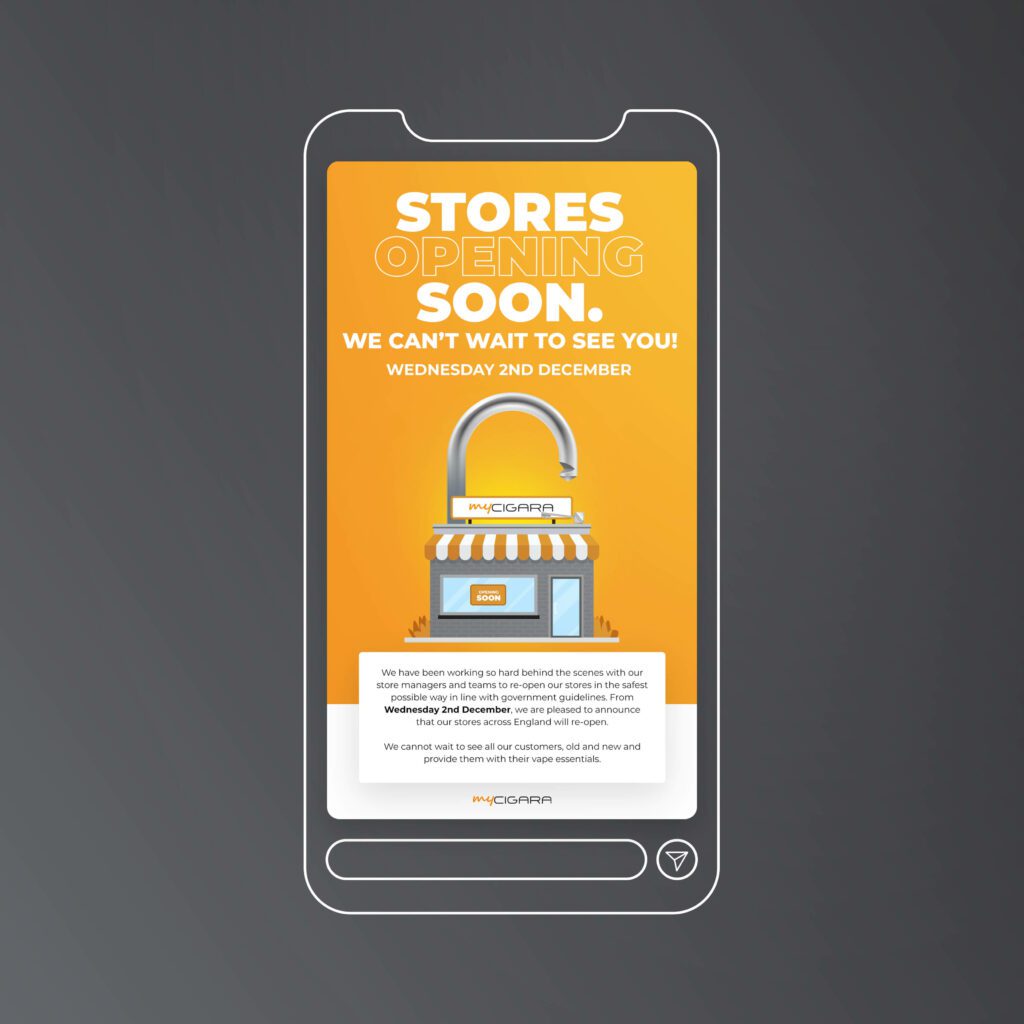
KIMP Tip: Since Stories appear on the screen only for a brief few moments, go for simple designs and visual narratives. The above example uses an illustrated depiction of store opening and the clear readable fonts make the message clear.
3. Web placements – headers, landing pages, and banner ads
Teaser ads can be placed on the web in the form of web banner ads or headers/sliders on your website supported by a dedicated landing page.
Web banner ads help with target placement on relevant sites and thus boost the effectiveness of your teaser campaign. This is also handy when it comes to retargeting customers – like targeting customers who previously purchased a similar product or teasing upcoming features to a customer who owns a particular product etc.
Website headers and sliders on the other hand can include GIFs or static images teasing the products or events. And these are presented to customers who have already expressed interest or are looking for information since they are on your website.
Both banner ads and website headers benefit from a supplementary landing page to augment the information presented and to allow users to register their interest by providing their contact information.
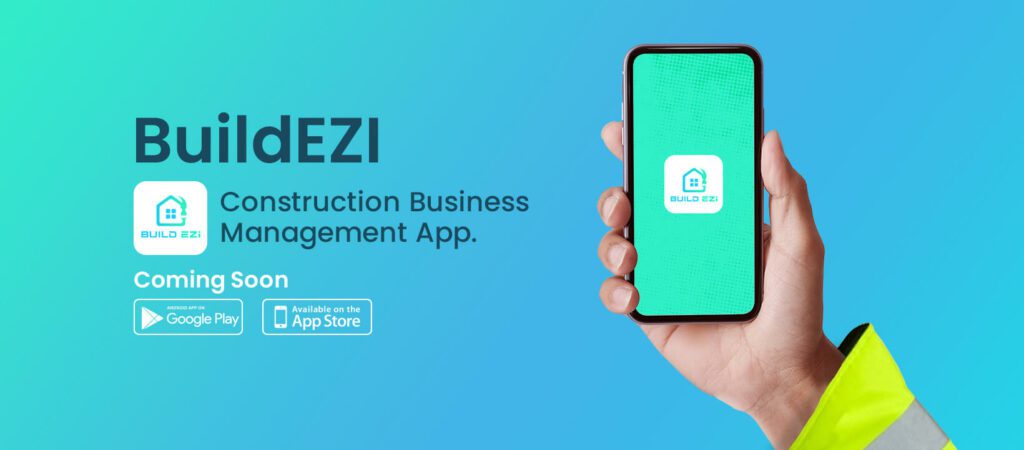
KIMP Tip: Ensure that the landing page aesthetic is consistent with the aesthetic of the banner ad or website slider/header. This helps avert confusion and presents the information effectively. Given the limited space available for web banners and headers/sliders, use visual representations to simplify the message – like the mobile phone mockup used in the above design to convey that it’s about the launch of the mobile app.
4. Video posts/ads – on apps, social media or TV broadcasting
Videos have the power to attract attention and communicate the message memorably. Therefore, videos are a great format for teaser advertising. Whether you’re utilizing them within apps, on social media platforms, or even through TV broadcasting, video teasers can grab attention, spark curiosity, and ultimately drive results.
Videos have the power to make an emotional connection. Take the below video for example. It was the official teaser Samsung launched for the Samsung Unpacked event. The video here takes users down the memory lane helping them revisit the evolution of smartphone technology. This was a brilliant story to lead up to the concept that the next big thing in mobile tech was coming. Such a level of impact can be achieved only through video posts!
KIMP Tip: Though Samsung chose a slightly long teaser ad in this case, teasers are more effective when short. So, try to keep the video as concise as possible – you do not want to give away too much information after all! But remember to add a hint about the next update or a clear CTA in the last frame!
5. Outdoor advertising – for effective local marketing
Giant billboards, eye-catching bus shelters, and captivating street posters are all great outdoor options for teaser ads. Strategically placed outdoor ads can amplify your message without appearing intrusive.
Outdoor teaser ads work especially when local marketing is in priority. Take the below billboard for example. Using billboards like this one to promote store opening offers the benefit of making it easier for consumers to understand where to find the store. Because in most cases, the teaser is placed close to the actual store location.
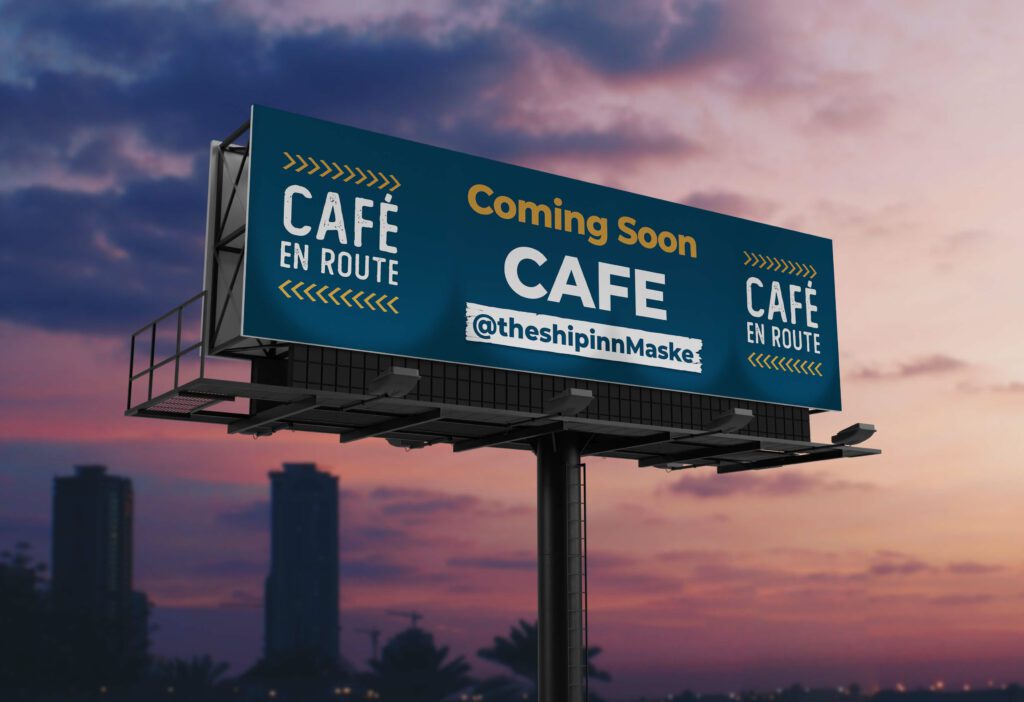
Additionally, outdoor ads can also be useful in increasing foot traffic to a store if the cryptic teaser ad is about an upcoming sale or announcement. Because then your customers, with their curiosity evoked, are more likely to walk into the store seeking more information.
KIMP Tip: Outdoor ads cannot lead to other promotional channels as with landing pages added next to digital ads and posts. So, include clear information about your store location or social media handles for customers to find out more and to receive further updates.
6. Print ads – tangible connections
In a world dominated by digital screens, print ads can bring a fresh twist to teaser advertising. From glossy magazines to strategically placed posters and flyers distributed at the relevant locations, teasers can be implemented in various formats in print. These can all act as the perfect testers that spark conversations about a product or event before launch.
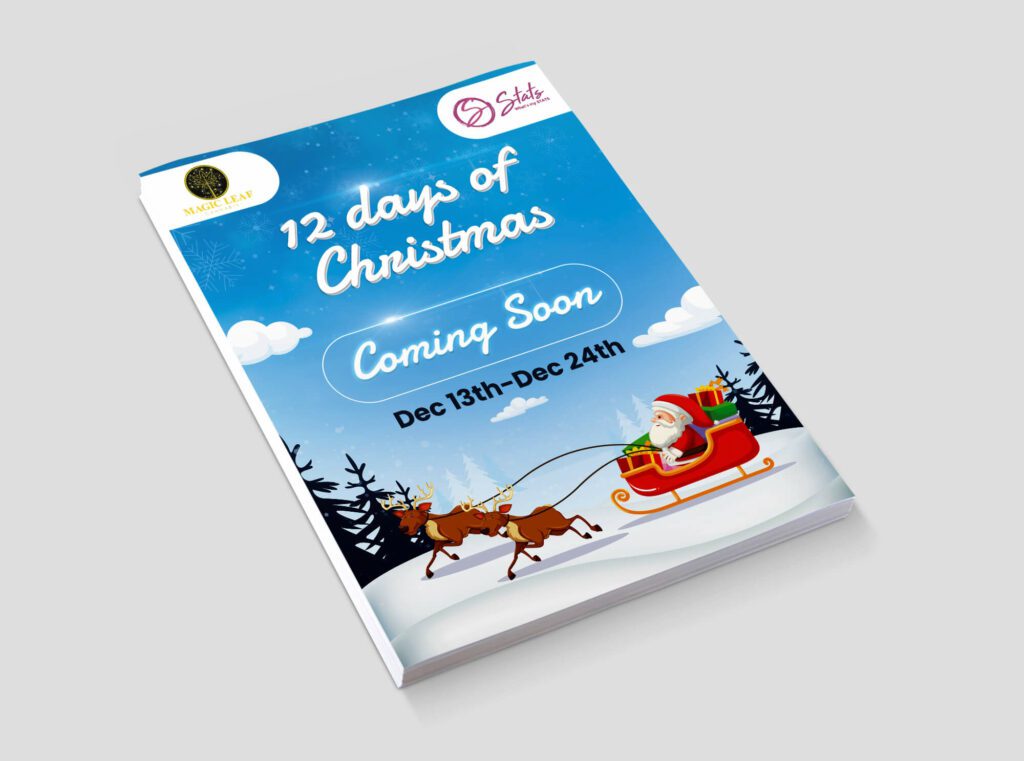
By choosing the relevant publication in the case of magazine ads or picking the right spot for distribution in the case of flyers, targeting becomes easier.
Print ads also come with longevity, unlike digital ads. Therefore, your teaser and the information you are conveying through it, are more likely to stay in your audience’s minds longer.
KIMP Tip: To make your print ads more effective, experiment with various tactile elements like the textures and quality of the paper or surface where the teaser is printed. This makes your teaser ad immersive and memorable. And similar to creating teaser ads for outdoor promotions, you need to add your digital signature like your social media handles or website address to help customers get further updates.
Now that we’ve discussed the various formats and platforms for teaser advertising, let’s move on to the applications.
The Versatile Applications of Teaser Advertising
1. Fueling product launches
The most evident and effective use of teaser advertising is to create anticipation before a product launch. Because it’s not easy to get people to try something new. So, evoking excitement and getting a lot of people to talk about the product before its launch is one way to increase the likelihood of more customers willingly trying the product.
Globally renowned brands like Nike regularly deploy teasers before launching big products as you can see in the social media post here.
One of the biggest advantages of leveraging teaser advertising for a product launch is that you can create teasers to keep your audience engaged in the days leading up to the actual launch. This helps you give a peek into your product and also gather feedback in the process. The initial response recorded can be handy in making last-minute touches – be it to the product packaging or the core promotional material or even the launch platform.
So, how do you make teaser advertising work for product launches?
- Start early – months or days ahead of the actual launch.
- Focus on the value proposition.
- Infuse emotions into the story conveyed. The below teaser from BMW, for example, creates awe and appeals to the tech-savvy audience.
2. Evoke excitement about an upcoming feature or update
Do you have new features coming to your software product? Or perhaps an upgraded version? Or even a new set of accessories to amplify the performance of a physical product? For all these, you’ll be targeting existing customers who own the respective product. Teasers can be valuable elements in getting them excited about the updates. Teaser advertising here can also be a way to ensure that they stay in the loop for all the upcoming communication about the updates.
In this case, teasers create a sense of exclusivity, making users feel like they’re part of something special. Additionally, this can help nurture a community of users who own and use the said product regularly.
So, how do you make teaser advertising work for announcements about new features & updates?
- Highlight the “why” of the update – to emphasize the benefits and the significance of the update.
- Use UI animations or screenshots to give a clearer picture of what to expect. As you can see in the below post from Google about AI updates coming to Google Maps.
Coming soon to @GoogleMaps: Immersive View for routes, a new way to see all the information you need about your route, from weather and traffic info, to directions, air quality and more. Explore the latest Maps updates we announced at I/O. https://t.co/aWTZW25QtV #GoogleIO
— Google (@Google) May 11, 2023
For this application, you need a more targeted approach. So, app notifications, emails to specific lists of customers who own the product, and targeted social media ads can be the most effective channels.
3. To create a buzz around business transformations
With teaser advertising, businesses can make heads turn and spark conversations about a major business transformation. This can be a big rebrand, diversification, or new market entry. Teasers followed by clear marketing collateral explaining the growth and the reason behind it ensure that audiences are not confused or apprehensive. Because with the gradual reveal, you can control the narrative.
Video teaser ads, social media updates as well as web placements can all be handy in the case of using teasers before business transformations.
So, how do you make teaser advertising work here?
- Use visually engaging narratives to tell the story behind the growth, the milestones that paved the way to this stage. This helps customers appreciate the transformation rather than exhibit skepticism.
- Ensure timely response to customer queries so as to clarify their doubts and keep them ready to embrace the change.
4. Help a sale gain momentum
When there is a sale coming, you want people to load their carts, add items to their wishlists, and plan their budgets. This is where a teaser can be helpful. Teaser advertising in this case can create anticipation about the product categories that will be available at discount prices. Or create a thrill about the sale price reveal.
Teasers about an upcoming sale are useful to bring existing customers back and to give a nudge to convert fresh leads into customers. So, a diversified approach incorporating social media and other digital channels can be effective.
So, how do you make teaser ads work in evoking excitement for an upcoming sale?
- Unlike product launch teasers that need to be planned and executed weeks in advance, sale teasers should ideally be planned just a few days ahead.
- Create a strong visual identity for the sale – including signature colors and templates. Using these in your teasers help lay the foundation and connect all upcoming communication about the sale.
- To grab attention while also preserving the mystery in your teaser, use simple animations like the one used by Amazon in the below post.
Need help designing simple animated teasers like the above example? Get a KIMP Video subscription!
5. Unwrap the thrill of seasonal campaigns
From Super Bowl Sundays to festive Christmas discounts, seasonal campaigns are prime opportunities to connect with your audience and boost sales. But remember that there are several brands to compete with during such occasions. So, early nudges like a well-planned and executed teaser can be quite effective.
They grab attention amidst the seasonal clutter, piquing curiosity and making your campaign stand out.
So, how do you make the most of teaser advertising for seasonal marketing?
- Align your teasers with the overall theme and spirit of the season, through relevant visuals and messaging.
- Feature the signature elements in your upcoming campaign – in the below teaser, for example, the celebrities are the unique elements of interest. Featuring them in the teaser gave a taste of their Super Bowl ad of the year which also featured them with the extra detail of delving into the core message that Uber Eats delivers groceries.
6. Win more registrations for an event
Planning an event? You cannot just post on social media or send an email and expect people to show up. You need to get them excited and give them multiple reasons to take part in the event. And teasers can be great tools for that.
Teasers can help spark interest and leave people eager about the theme, speakers and activities of the event. Moreover, the speculation that teaser advertising creates boosts social media conversations and drives more website traffic as well. All this can lead to an increase in registrations for the event.
Depending on the nature of the event and the target audience, choose a good mix of digital and print channels to build the hype gradually. You can also use contests and giveaways to amplify the results.
So, how do you leverage teaser advertising to promote an event?
- Do not reveal too much. You need to keep the lines open so that people come back to find out about the details like the venue and agenda.
- Create email lists so that customers can get further updates and RSVP to the event.
- Use core brand identifiers like your brand colors, logo and logo animations, or even your mascot to leverage your brand’s authority. For example, the below teaser for Duocon by Duolingo features a visual style signature to the brand. This helps customers instant relate to the teaser.
Unlock the Power of Teaser Advertising With Designs by KIMP
In conclusion, teaser advertising is beneficial to brands in many ways. But the key is to define a visual theme and consistently stick to it. The teaser itself and the marketing designs that ensue should all be visually cohesive. That’s when they manage to effectively lead up to the main reveal. This is where an unlimited design service, like KIMP, with a dedicated design team can make a difference.
Sign up for a KIMP subscription now and take your teaser advertising to the next level!

